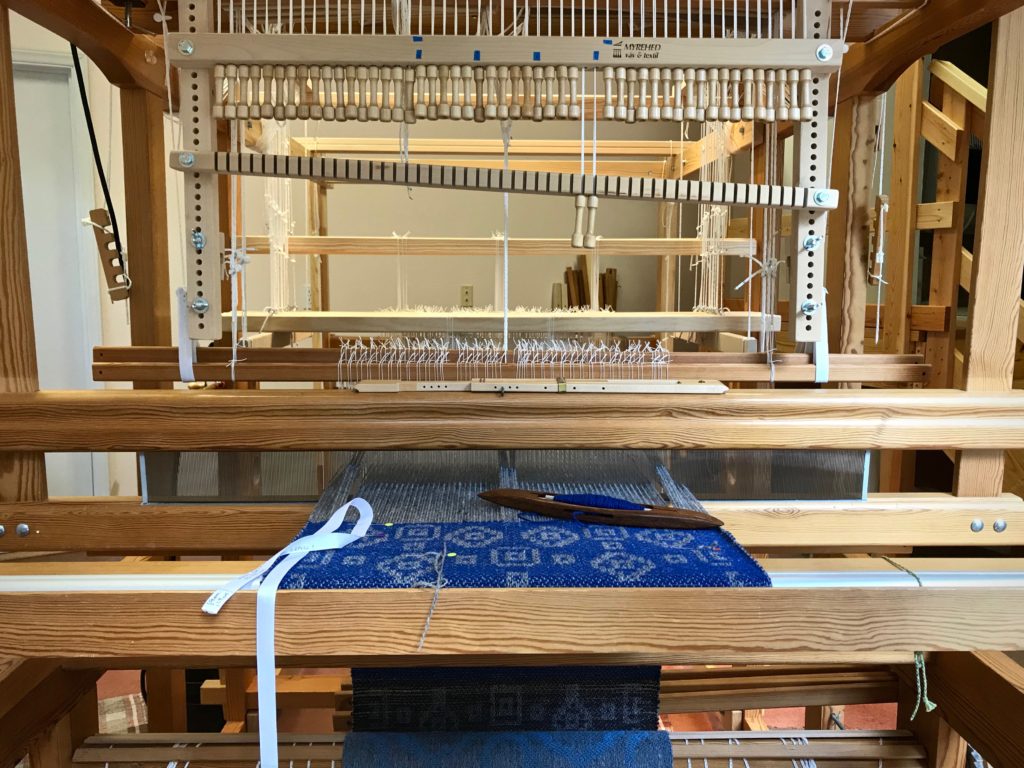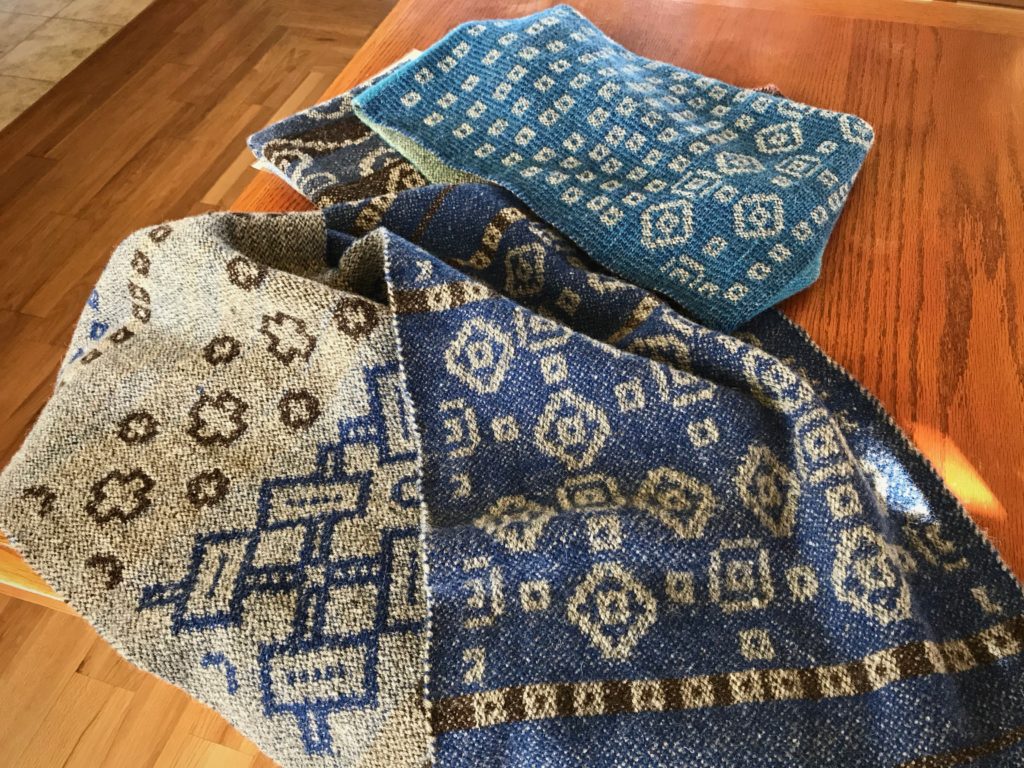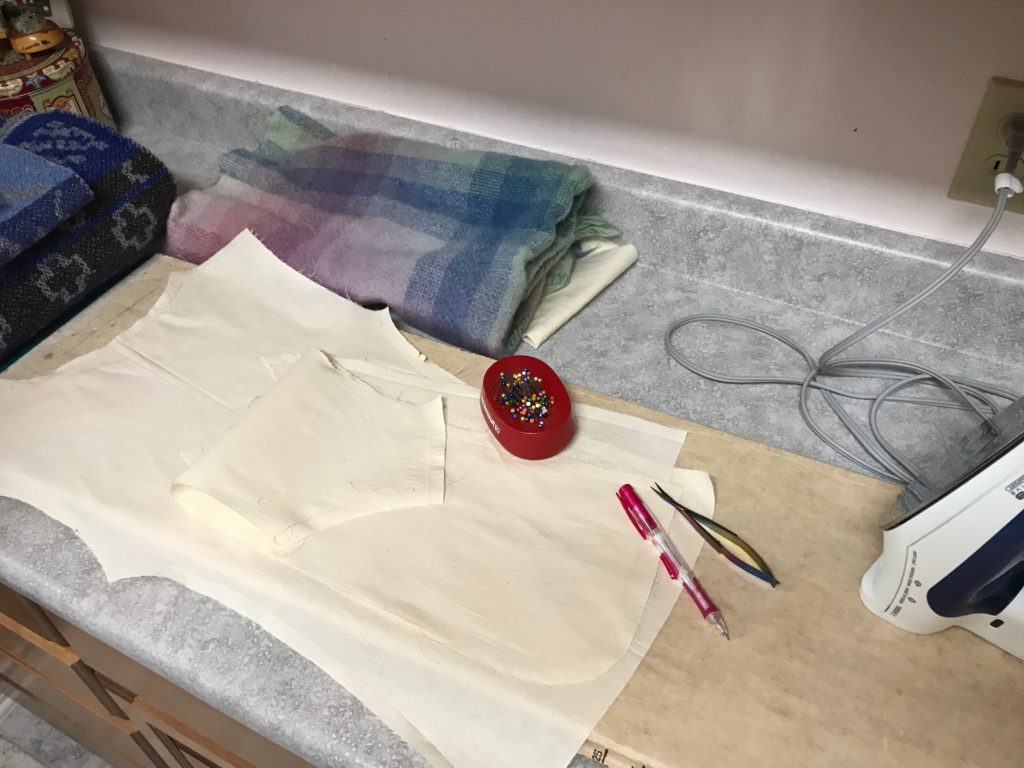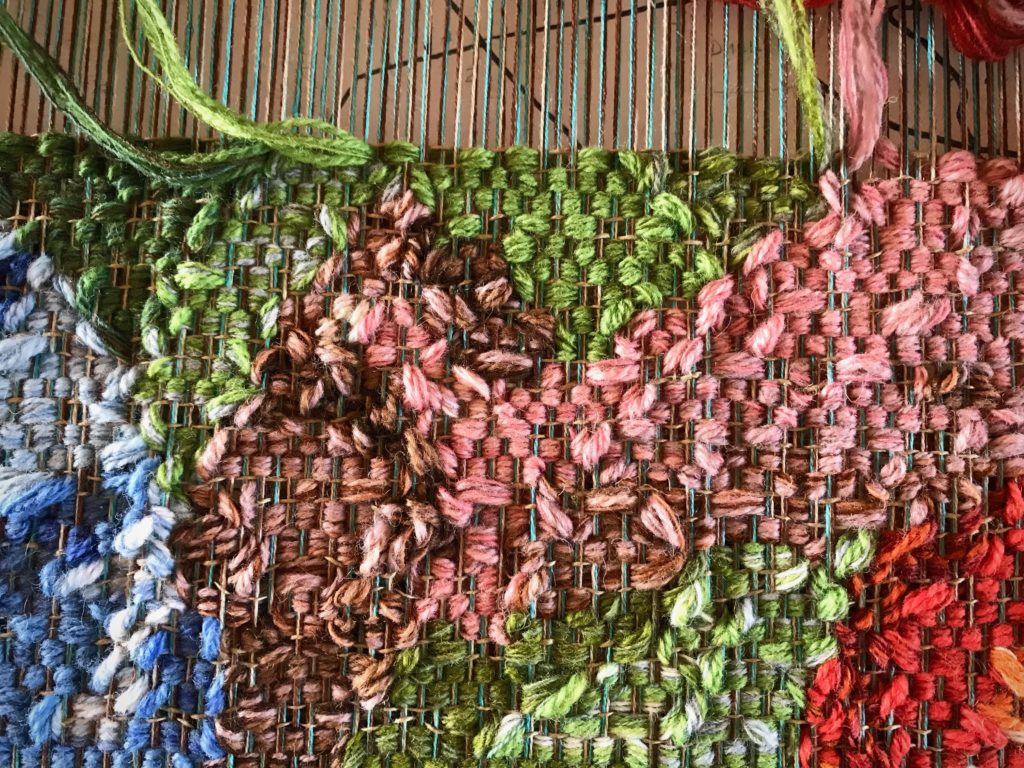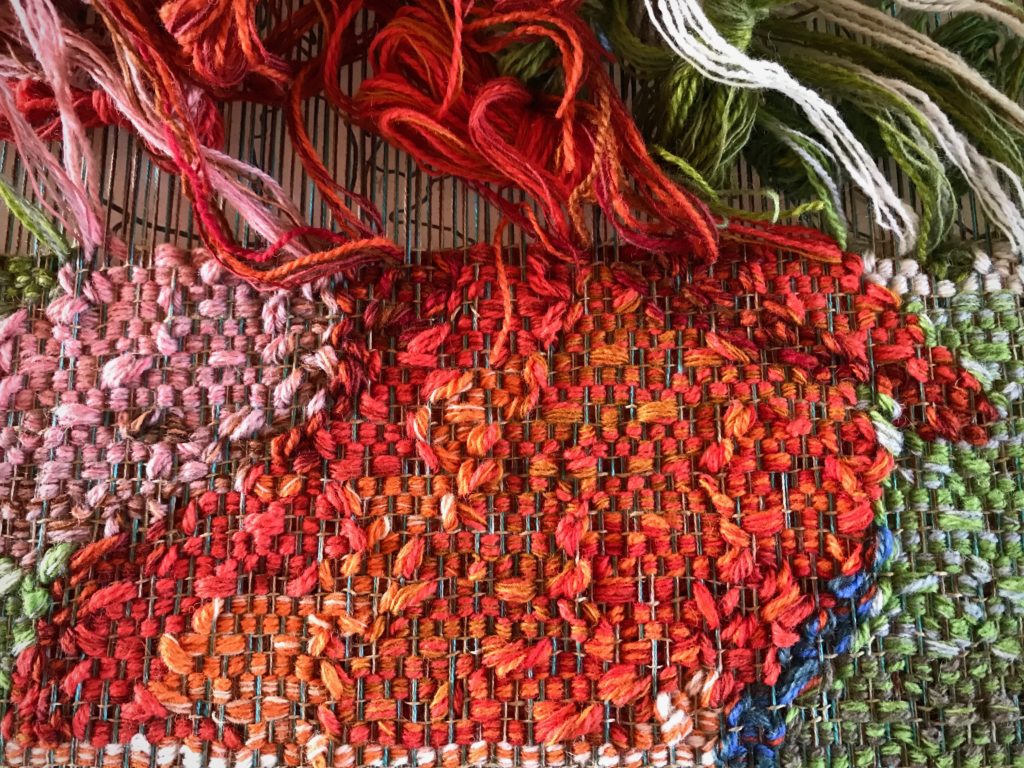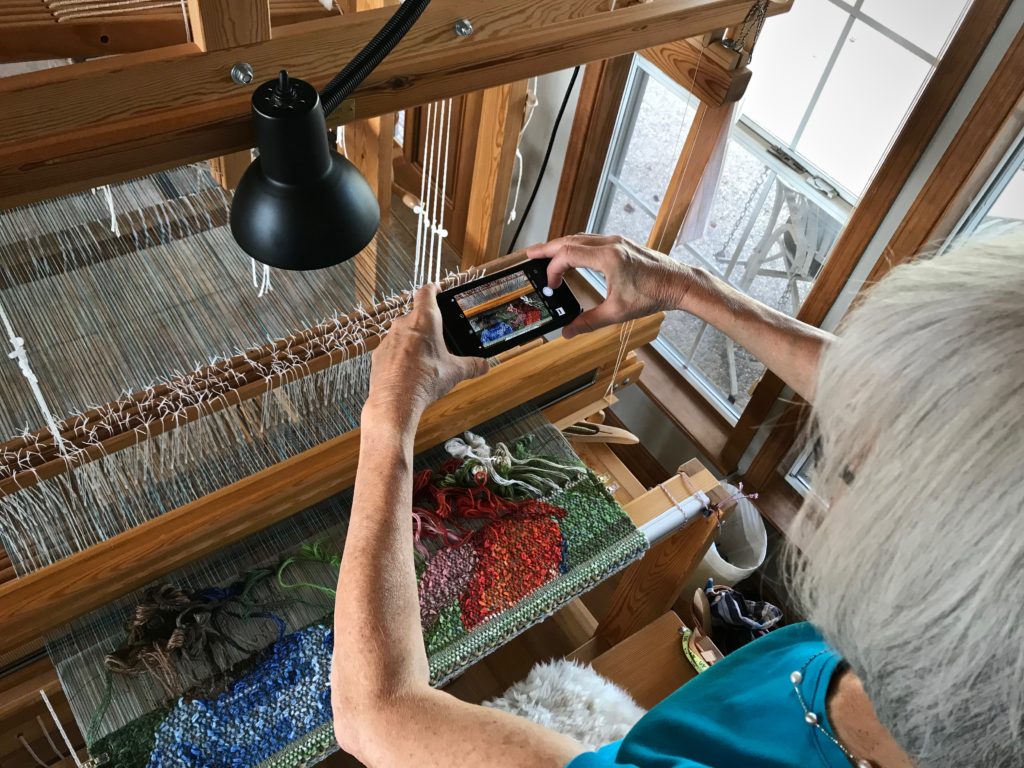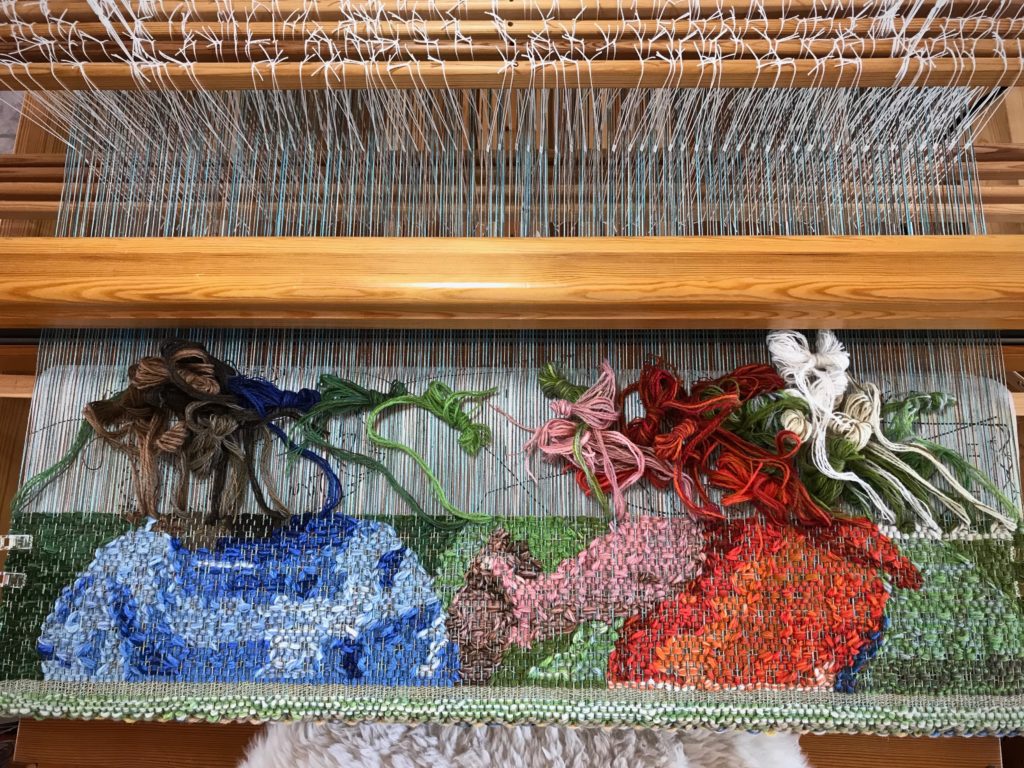The best thing about weaving a pictorial tapestry? Having a cartoon to follow, with row-by-row definition. This Siblings tapestry has its joys and challenges. It is a joy to weave Ari’s hair, as if I get to comb his locks into place. At the same time, it’s a challenge to see up close what can only be recognized at a distance. Lucia’s shirt is a joy to weave because of the bright colors and distinct shading. But what a challenge to get the right value of turquoise for the leg of the rabbit hutch in relation to the value of orange in Lucia’s left shoulder.


The yarn is my paint. I make decisions and adjustments as I see how the colors interact. Under the warp, of course, is my cartoon with all the details—outline, hues, value changes. That cartoon is constant, unchanging, and reassuring. It’s the key to this whole process.


In the joys and challenges we face, we make decisions based on what we see. Take a look below the surface. Look through the warp to see the cartoon. True love is in the details. Jesus instructs and guides through his love. Constant, unchanging, and reassuring. It makes perfect sense to follow the Maker’s cartoon.

May you grow in love.
With joy,
Karen










